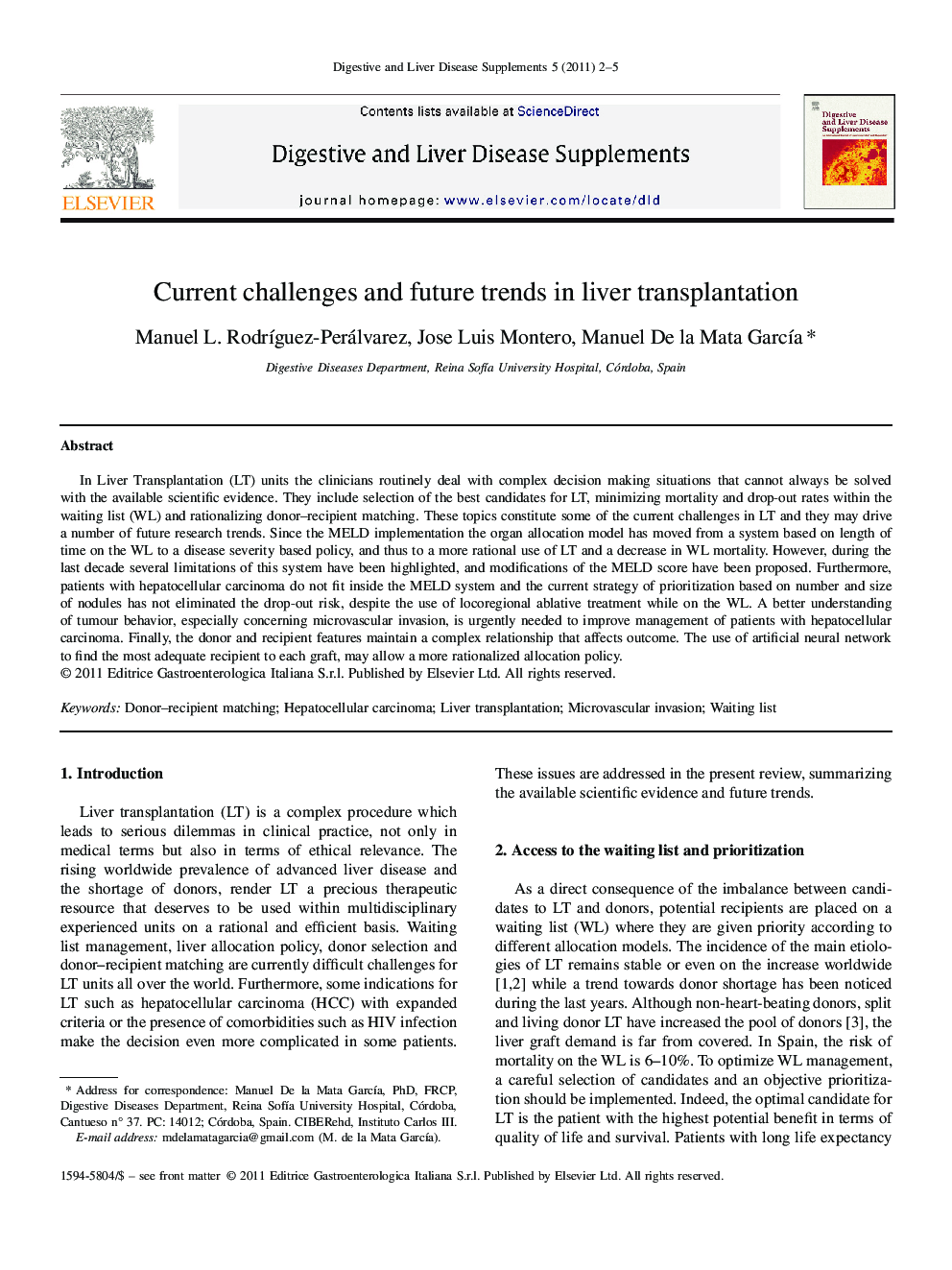| کد مقاله | کد نشریه | سال انتشار | مقاله انگلیسی | نسخه تمام متن |
|---|---|---|---|---|
| 3286980 | 1589927 | 2011 | 4 صفحه PDF | دانلود رایگان |

In Liver Transplantation (LT) units the clinicians routinely deal with complex decision making situations that cannot always be solved with the available scientific evidence. They include selection of the best candidates for LT, minimizing mortality and drop-out rates within the waiting list (WL) and rationalizing donor–recipient matching. These topics constitute some of the current challenges in LT and they may drive a number of future research trends. Since the MELD implementation the organ allocation model has moved from a system based on length of time on the WL to a disease severity based policy, and thus to a more rational use of LT and a decrease in WL mortality. However, during the last decade several limitations of this system have been highlighted, and modifications of the MELD score have been proposed. Furthermore, patients with hepatocellular carcinoma do not fit inside the MELD system and the current strategy of prioritization based on number and size of nodules has not eliminated the drop-out risk, despite the use of locoregional ablative treatment while on the WL. A better understanding of tumour behavior, especially concerning microvascular invasion, is urgently needed to improve management of patients with hepatocellular carcinoma. Finally, the donor and recipient features maintain a complex relationship that affects outcome. The use of artificial neural network to find the most adequate recipient to each graft, may allow a more rationalized allocation policy.
Journal: Digestive and Liver Disease Supplements - Volume 5, Issue 1, December 2011, Pages 2-5